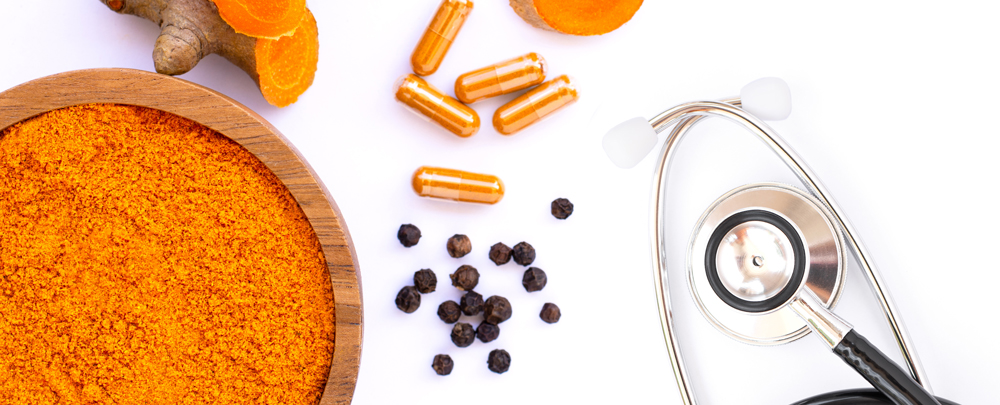Recently the article titled “Effectiveness of the piperine-supplemented Curcuma longa L. in metabolic control of patients with type 2 diabetes” was published in the International Journal of Food Sciences and Nutrition. In this paper, the authors aimed to analyze whether metabolic regulation could be achieved with piperine-supplemented Curcuma longa L. in patients with type 2 diabetes. According to the authors, this study found that participants with type 2 diabetes who consumed 500 mg Curcuma longa L with 5 mg piperine had decreased glycemia, HbA1c, HOMA index, and triglyceride levels. So should those with type 2 diabetes supplement with Curcuma longa L with piperine? To answer that, let’s have a closer look at this study.
A positive feature of this study was that it used a randomized, double-blinded placebo-controlled study design. That is about as good as it gets with regards to supplementation studies. The design means that neither the investigators nor the participants knew which treatment they were consuming. Moreover, the placebo that was used, 500 mg of carboxymethyl cellulose (cellulose gum) isn’t really absorbed or digested so is unlikely to have an effect itself. That’s good because you certainly wouldn’t want to compare the supplement to a placebo that actually affects glucose trafficking in the body! The capsules themselves were standardized to contain 90% curcumin, so the active ingredient was definitely in the supplement, which represents another strength of the study! The participants were given the supplements without supervision, so it is not clear how adherence to the supplement was measured. Presumably, it was not monitored that well but that is realistic and reflective of “real world” patients. So overall, the study design was good.
Moving on to the results, in the end, 76 people participated (38/group). Thirty-three from the experimental group and 28 in the control group finished the study and were included in the final analysis. The characteristics of these individuals were generally well matched between the groups. Groups were of similar socioeconomic, marital, diabetes, and drug use status. Another positive point!
All starting lab measures were the same with the exception of higher fasting glucose, HbA1c, and triglyceride levels in the experimental group. What does this mean? This means that the difference between the groups at the end of the 120 d could have been due to the initial differences. Also, 120 d might not be sufficient to affect glycated hemoglobin concentrations, which are generally considered long term markers of glycemia. Despite this caveat, let’s see what happened after 120 d of Curcuma longa L with piperine supplementation. Table 4, included by the authors, was very confusing. However, based on the text, decreases in fasting glucose concentrations were observed after controlling for a number of confounding variables. Interesting decreases in triglyceride concentrations and HOMA-IR (which is an index of insulin resistance) were also seen with supplementation.
So, what can be concluded from these results? This study shows that in patients with type 2 diabetes, there may be potential benefits to glycemic control in daily supplementation with 500 mg Curcuma longa L with 5 mg piperine. More research needs to be done to be more conclusive, but this study is certainly a good start to our understanding of the potential beneficial effects of curcumin in the context of type 2 diabetes.
Reference:
Neta JFF, et al. Effectiveness of the piperine-supplemented Curcuma longa L. in metabolic control of patients with type 2 diabetes: a randomised double-blind placebo-controlled clinical trial. Int J Food Sci Nutr. 2021 Feb 14:1-10.


